- Finance
-
Equipment
- Beverage
- Coffee
-
Cooking
- Shop all cooking
- Bratt pans
- Char grills
- Chicken rotisseries
- Combi ovens
- Contact grills
- Convection ovens
- Conveyor toasters
- Cooktops
- Cooktop oven combos
- Crepe and pancake makers
- Deck ovens
- Fryers and oil filters
- Griddles
- Kebab machines
- Microwaves
- Pasta cookers
- Pizza ovens
- Range ovens
- Rice cookers
- Salamander grills
- Sous vide
- Speed ovens
- Steamers
- Tandoor ovens
- Toaster grills
- Waffle makers
- Wok burners
- Other
- Dishwashers
- Food display
- Food preparation
- Stainless steel
- Laundry
- Point of sale
-
Refrigeration
- Shop all refrigeration
- Blast chillers
- Chest freezers
- Countertop fridges
- Display freezers
- Display fridges
- Gelato freezers
- Ice-cream machines
- Ice machines
- Pizza prep fridges
- Refrigerated drawers
- Sandwich prep fridges
- Slushie machines
- Under counter freezers
- Under counter fridges
- Upright freezers
- Upright fridges
- Other
- Restaurant furniture
- Shop all equipment
- Customers
- FAQs
- Resources
- About Us
Share
Best Commercial Convection Oven: Buyer’s Guide
article
This commercial convection oven buying guide covers
- Introduction
- Types of commercial convection ovens
- Styles of commercial convection ovens
- Advantages of a commercial convection oven
- Main things to consider before ordering a commercial convection oven
- Best commercial convection oven brands in Australia
- Used commercial convection oven - worth considering?
- Warranty and insurance
- Questions to ask before ordering a commercial convection oven
- Commercial convection oven frequently asked questions
- Commercial convection oven terminology
- How to maintain your commercial convection oven
- How often should a commercial convection oven be serviced?
- Save your cash, use ours!
Mouth-watering roasts, crispy cookies, scrumptious muffins or delicious pizzas — commercial convection ovens can prepare a range of signature dishes to perfection. On top of that, they do it up to 25% faster than traditional ovens!
If you need a multi-purpose oven that will boost kitchen productivity, deliver even cooking and browning, even for the largest batches, a convection oven is the solution.
They’re ideal for a wide range of food services – from small food trucks to mid-sized restaurants to large bakeries, to name just a few.
With so many makes and models of commercial convection ovens available in Australia, picking the best one for your needs can be complicated.
This buyer’s guide will help you cut through the confusion and make an informed decision.
Among other things, it covers the different types and styles of commercial convection ovens, the top brands in Australia and convection-oven terminology.
Types of commercial convection ovens
Commercial convection ovens are distinguished by their:
- power or fuel source
- burner placement
- size
- number of decks
Electric convection ovens
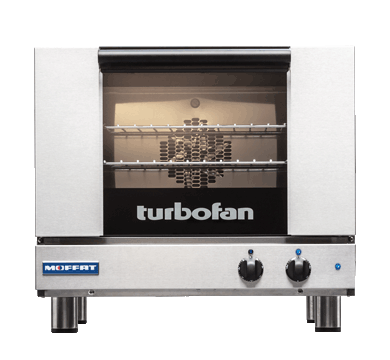
These ovens run purely on electricity and can be installed in most kitchens in next to no time. While these are good kitchen workhorses, the larger models consume more electricity and may cost more in the long run.
Natural gas convection oven
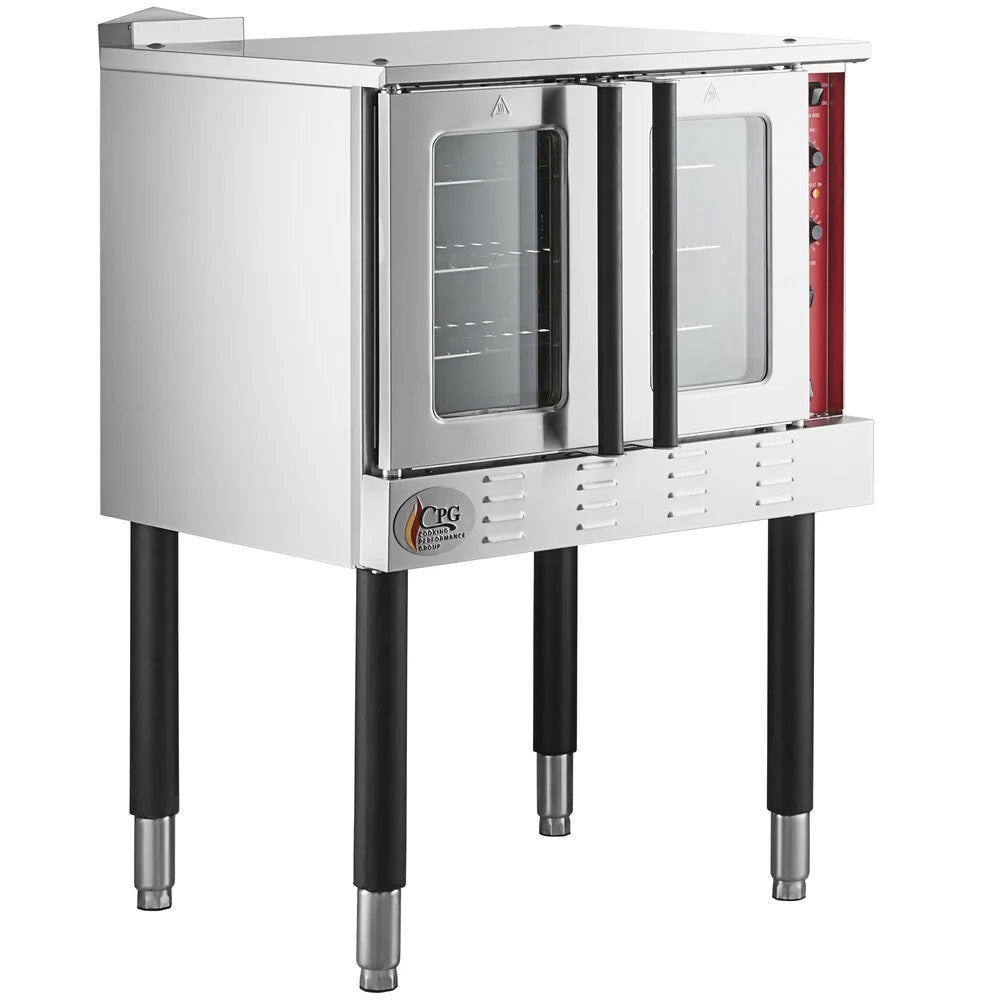
These industrial convection ovens run on natural gas, which is cheaper and the best option if your kitchen has an existing gas connection.
They heat up quicker than their electrical counterparts. However, they still need electricity to run the fans, activate the touchscreen, power the lights, and so on.
LPG convection oven
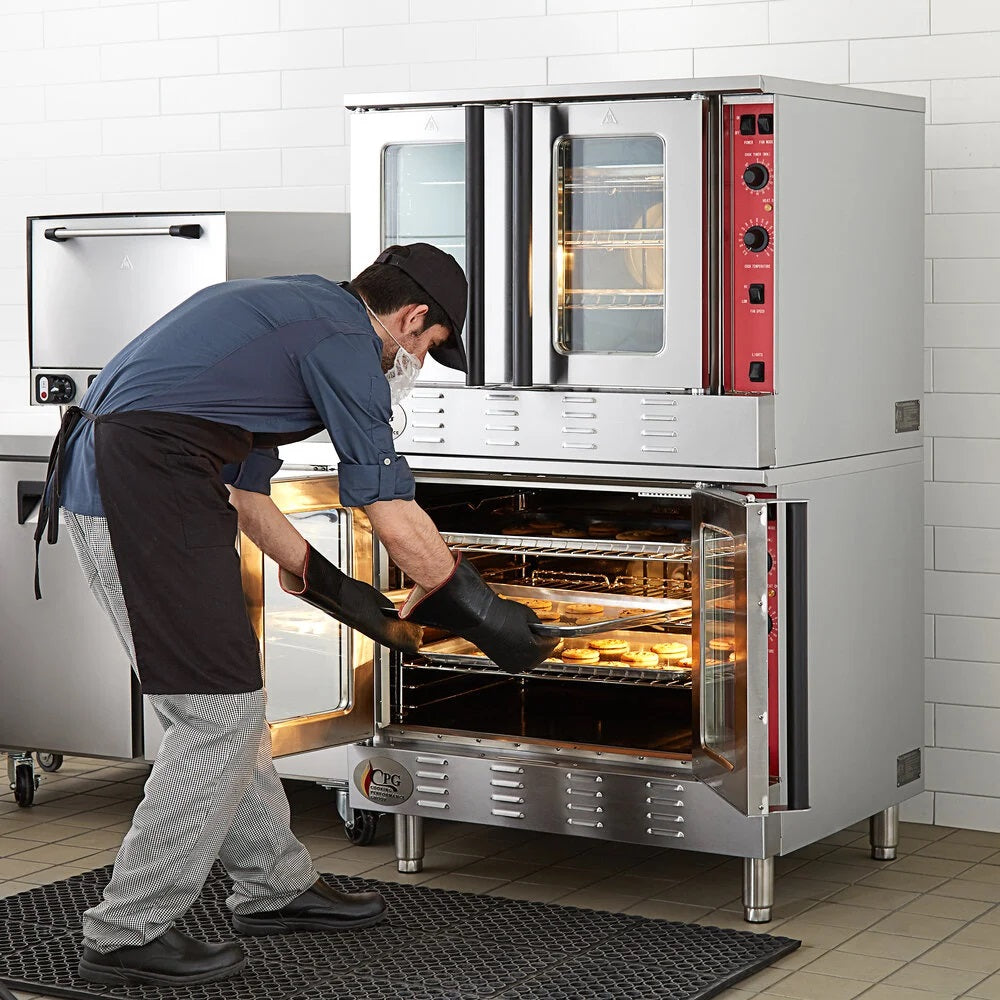
LPG is a good alternative to natural gas. Though it’s more expensive than natural gas, it’s more efficient. Just like natural-gas ovens, LPG convection ovens need electricity to run the fan, activate the touchscreen, power the lights, and so on.
Electric convection oven vs natural gas convection oven vs LPG convection oven
|
Electric convection oven |
Natural gas convection oven |
LPG convection oven |
|
|
|
|
|
|
|
|
|
|
|
|
Direct-fired convection ovens
In direct-fired convection ovens, the burner is placed right under the oven, pushing heat directly into the oven cavity. The heat mixes with the re-circulated air within the cavity and comes in direct contact with the food being cooked.
It works best for high-temperature baking of pizza, flatbread, biscuits, crackers and cookies.
Indirect-fired convection ovens
In these ovens, the burner never comes into direct contact with the recirculated air or combustion products.
Food is cooked slowly and takes longer to cook compared to direct-fired ovens but they produce more even results, which is why they’re often preferred for baking cakes, cupcakes, pastries and pies. Roasts and casseroles are also better cooked using indirect heat.
Full-size convection ovens
These convection ovens can typically accommodate one or more standard (i.e. 18” x 26”) sheet pans.
They’re available in countertop and floor styles and are, unsurprisingly, capable of cooking more food in one go than their smaller counterparts.
Half-size convection ovens
These ovens can typically accommodate one or more half-size (i.e. 18” x 13”) sheet pans.
They’re ideal for use as secondary ovens in busy commercial kitchens. Their size makes them easier to move and operate at venues where a full kitchen setup isn’t available.
Quarter-size convection ovens
These ovens hold one or more quarter-size (i.e. 9 ½” x 13”) sheet pans.
If your business produces small batches of food, a quarter-size oven will be a good fit. They’re compact and often used by caterers for smaller events.
Single-deck convection ovens
As the name suggests, these ovens come with a single deck and cook less food at a time compared to double-deck types.
They’re less bulky, and the floor-standing ones can accommodate accessories underneath, saving even more space.
Single-deck convection ovens are comparatively lighter in weight and easier to move.
Double-deck convection ovens
These types have two decks and can handle substantial food volumes.
They allow multiple cooking racks simultaneously, meeting high-output demands consistently.
However, they’re bulky and best suited to bigger kitchens.
Styles of commercial convection ovens
Countertop convection ovens
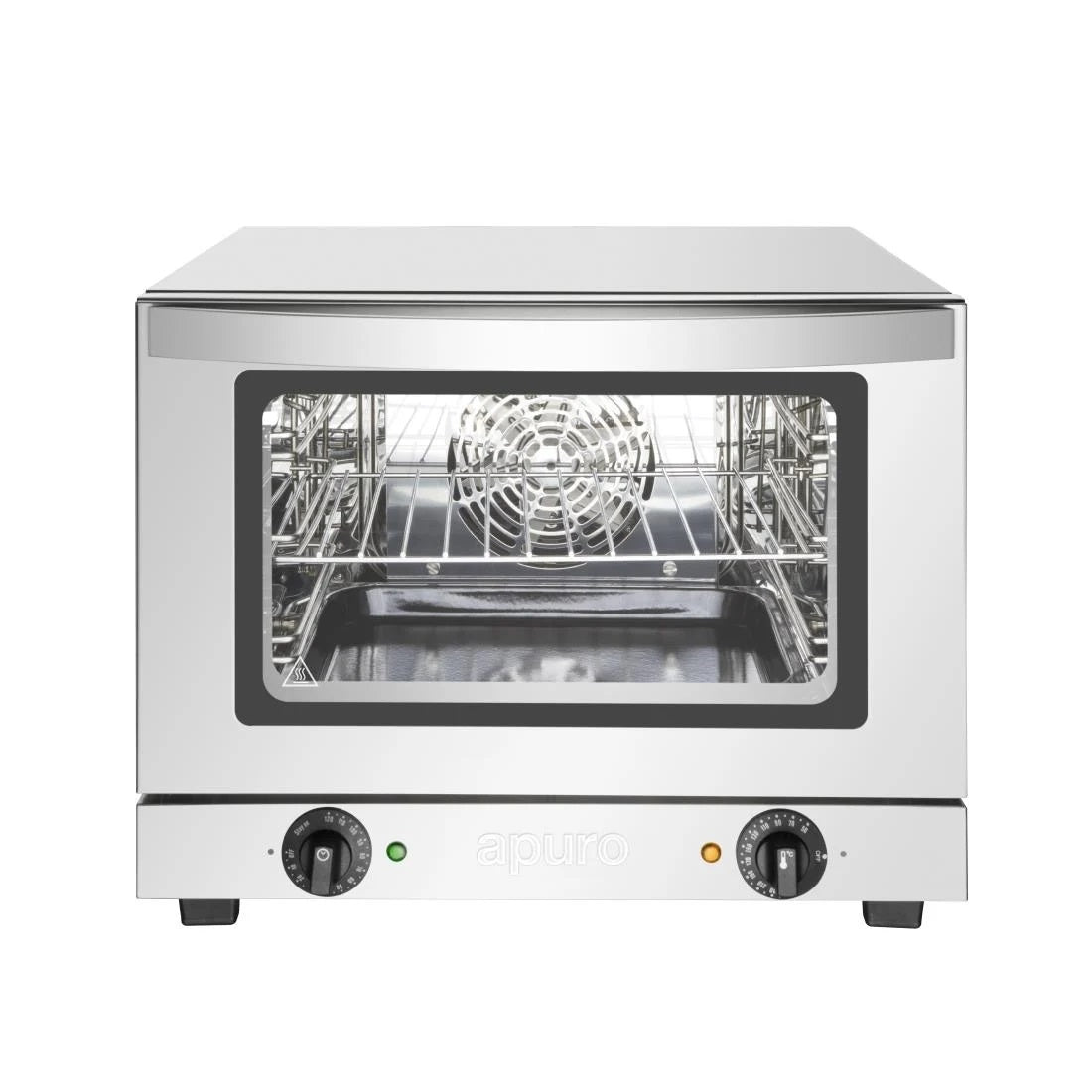
These compact ovens are designed for placement on countertops. They’re ideal for smaller commercial kitchens like concession stands, food trucks, small takeaways and cafés.
Advanced and more powerful commercial countertop convection ovens can serve larger kitchens too.
Floor convection oven
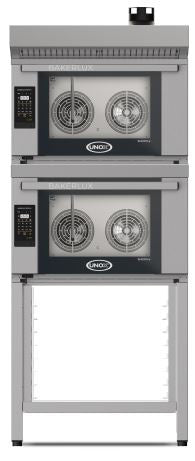
These ovens are ideal for high-volume kitchens. The more compact models fit well in kitchens with limited space.
Full-size, double-deck models can serve larger commercial kitchens where space isn’t a concern.
Advantages of commercial convection ovens
Faster cooking
Reduce cooking time by up to 25% compared to conventional ovens. Some models claim to be even faster. Faster cooking means more customers served and more revenue earned.
Consistent cooking
A consistent temperature throughout the oven chamber ensures the food cooks the same irrespective of which rack it’s placed on.
Better yield
Less cooking time means less food shrinkage and higher yield. Meat retains more of its weight and you and your customers get better value from it.
Even browning
Deliciously crispy dishes are easy to make in a convection oven. Even heat distribution helps to render fat and gives better browning results.
Tastier outcomes
Food cooked in commercial convection ovens often taste better. Even and thorough cooking at a lower temperature keeps meat juicy and cookies crispy.
High versatility
These versatile workhorses are used for roasting, baking, broiling, preparing appetizing pizzas or meat dishes, re-thermalizing, and more — they do it all.
Eco-friendly
Faster cooking at a lower temperature means less energy consumption, lower energy bills, and a smaller carbon footprint.
Main things to consider before ordering a commercial convection oven
What type of food will you be cooking?
To determine the right type of convection oven for your needs, think about the type of food you’ll be preparing in the oven.
While convection ovens in general are multi-functional, some types are more suitable for specific types of food. For example, direct-fired ovens are best for baking flatbreads and pizza, while indirect-fired ovens are best for baking cupcakes.
How much food will you be cooking?
The more food you need to cook, the larger and more powerful the oven you’ll require.
Also, if you need to run the oven for a longer period of time to deliver several batches throughout the day, you’ll need an industrial convection oven that’s built for the task.
Conversely, if you need to run the oven only for a limited time every day or just for a single batch, a less powerful model will do.
Oven type
There are several different types of convection ovens; you’ll want a type that matches your cooking requirements.
For more information, see the ‘Types of commercial convection ovens’ section above.
Oven style
The right style of oven — countertop or floor — will depend on how much food you intend to cook per batch and how much space you’ve got in your kitchen. Electric countertop convection ovens are best for front-of-house use.
Read the manufacturer’s instructions on the recommended space for the appliance. Consider your kitchen layout and ease of access before deciding on the style. For more information, please see the ‘Styles of commercial convection ovens’ section above.
Oven size
If you’re running a big restaurant or a full-scale commercial bakery, you’ll probably need a full-size, double-deck convection oven.
If you have a takeaway kitchen or food truck, a more compact, countertop version will probably be more suitable.
Installation
Before you order a convection oven, find out the installation requirements (these are usually available in the manufacturer’s specifications sheet).
Consider whether you’ll need an extra electric plug point or if an existing one will suffice. Also, if the oven needs professional installation, make sure the installer is a registered technician.
Large ovens heat up and expel grease-laden particles into the surrounding air, so ventilation is an important consideration.
As well as the oven, a proper hood and fire suppression system will need to be installed, as per the local regulations.
Energy efficiency
While they may be a little pricier, over their lifetime energy-efficient ovens can save you a considerable amount of money.
An ENERGY STAR certified gas convection oven has at least a 49% cooking energy efficiency and idle energy rate of 9,500 Btu/h, reducing your utility bill by around $208 annually and $2,082 over the product’s lifetime compared to a standard model.
A half-size electric convection oven with an ENERGY STAR certification has a minimum of 71% cooking energy efficiency and a full-size model must have at least 76% cooking energy efficiency, saving you about $104 annually and $997 over the lifetime of the oven compared to a standard model.[1]
Safety features
An industrial convection oven must be operated in a well-ventilated space.
Among the basic safety features of most commercial convection ovens are anti-skid feet for stability, overheating safety cut-out, stay-cool door handles, and safe-touch oven exteriors.
Oven material
Most commercial convection ovens are made of stainless steel or galvanized steel. The former is more durable, while the latter is more affordable.
Enamelled stainless steel is often used in the oven cavity, because of its durability. Porcelain interiors are easier to clean, but they might wear out faster than steel. Look for a model with welded metal panels rather than bolted ones.
Stainless-steel and tempered glass doors are common in ovens. Solid stainless steel doors are durable and better at heat retention, however unlike the tempered glass doors, you can’t see through them and have to open the door to check on the food.
Convection fans
The effectiveness of a convection oven depends largely on its fans.
Most industrial convection oven fans have at least two fan-speed settings: high and low. The high fan speed setting is used for cooking dense, heavy foods like roasts and casseroles, while the low fan speed setting is better suited for delicate items like pastries and breads. In some models, the fan switches direction when the door is opened or can circulate air in two different directions.
Ovens with additional fan speed settings, such as medium, give you more precise control over the cooking process and are best for kitchens serving various dishes.
Oven controls
Commercial convection ovens come with either manual or digital controls.
Manual controls let you select the desired temperature and cook time at the press of a few buttons.
Digital controls, on the other hand, let you pre-set the temperature and cooking time for dishes, ensuring every dish comes out the same, no matter who cooked it.
Hence the reason digital controls are better suited to kitchens in which several staff members use the appliance.
Special features
Some commercial convection ovens come with premium features.
For example, some models automatically adjust the temperature and cooking time for different recipes, cook-and-hold to keep cooked food at the desired temperature without burning or drying, or inject steam into the baking chamber to make artisan bread or keep meat juicy. Some even come with pre-set controls for over 200 recipes!
Ease of use and cleaning
Compact models are quite simple to use and require little staff training.
However, you may need to train your staff to use a larger and more advanced model.
Regular cleaning can add years to the life of your commercial convection oven and safeguard food hygiene. High-quality stainless-steel convection ovens with enamelled interiors and removable racks are easier to clean.
Look for a model with a seamless, plug-in continuous door seal, which makes cleaning the door simpler.
Budget
Depending on the make and model, a new commercial convection oven can cost anywhere between $700 and $17,000 or more.
A compact, 21-litre convection oven from pocket-friendly brand Apuro costs $750 while a Bakerlux 16-tray electric convection oven from UNOX will set you back $16,800.
When determining your budget, don’t forget to include incidental costs, like delivery and installation (the cost of which will reflect the size and complexity of the oven).
You’ll also need to consider the costs of any accessories you need to buy separately, such as a stacking kit or wire rack. The long-term, operational costs include electricity/gas, maintenance and repair.
Best commercial convection oven brands in Australia
Here are some of the best commercial convection oven brands available in Australia. While this list isn’t exhaustive, the makes and models mentioned are among the leading ones.
Turbofan

Turbofan by Moffat is one of the biggest-selling convection oven brands in Australia. With its head office in Melbourne, Moffat is a global exporter of commercial kitchen equipment across 50 countries.
The brand has been serving the Australian market since the 1920s. Their range of commercial convection ovens includes both compact countertop and large floor-standing models with varying tray sizes.
Turbofan E27D3 electric convection oven
This full-size, commercial countertop convection oven is a dependable performer, ideal for modern commercial kitchens.
Suitable for smaller bakeries or front-of-house cooking in cafes and restaurants, this oven has advanced features like a bi-directional reversing fan system and a safe-touch vented drop-down door.
It also has 20 programs with three-stage cooking, plus a stage-end alarm.
Key features:
- Dimensions (HxWxD): 607mm x 810mm x 762mm
- Capacity: 3 x 660mm x 460mm trays
- Temperature range: 50°C–260°C
- Steam injection: Yes
- Wattage: 4.7kW
- Power type: Single phase 20 Amp
Turbofan E33D5 electric convection oven
This large electric convection oven with high-tech features is a powerful workhorse suitable for medium- to high-volume commercial kitchens.
This programmable oven features a two-speed, bi-directional reversing fan system and a five-level moisture-injection mode with electronic timer for maximum precision and control.
The model also offers 20 programs with three-stage cooking.
Key features:
- Dimensions (HxWxD): 730mm x 610mm x 680 mm
- Capacity: 5 x 1/1 GN trays
- Temperature range: 50°C–260°C
- Steam injection: Yes
- Wattage: 6kW
- Power type: Single phase 20 Amp
Turbofan G32D4 gas convection oven
This large electric convection oven with high-tech features is a powerful workhorse suitable for medium- to high-volume commercial kitchens.
This programmable oven features a two-speed, bi-directional reversing fan system and a five-level moisture-injection mode with electronic timer for maximum precision and control.
The model also offers 20 programs with three-stage cooking.
Key features:
- Dimensions (HxWxD): 730mm x 610mm x 680 mm
- Capacity: 5 x 1/1 GN trays
- Temperature range: 50°C–260°C
- Steam injection: Yes
- Wattage: 6kW
- Power type: Single phase 20 Amp
UNOX
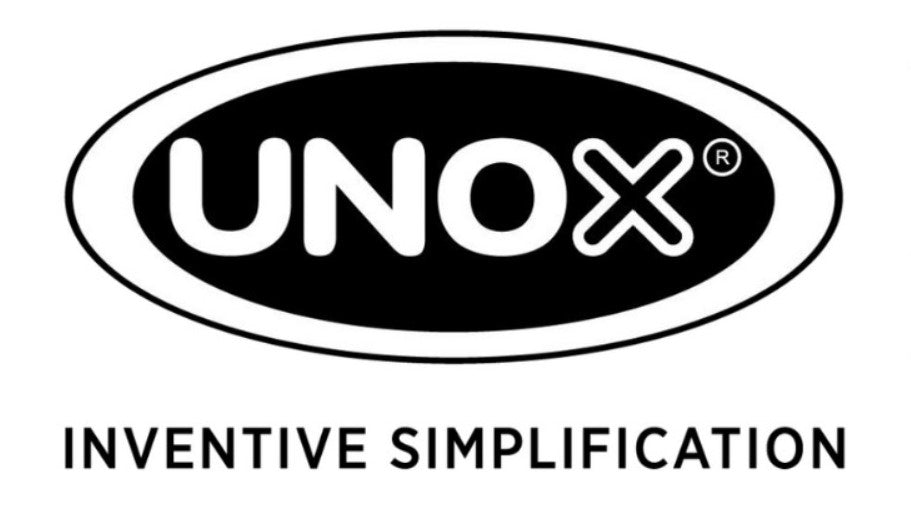
UNOX is an Italian brand that has been bringing innovative cooking technology to commercial food and catering services since the 1990s.
UNOX convection ovens are a popular choice of professional chefs in Australia and are available in different sizes, types and specifications. The brand’s Bakerlux range is highly praised.
UNOX Bakerlux Shop.Pro XEFT-30EU-ELDV
This compact, electric model from the Bakerlux shop.pro range is one of the best commercial countertop convection ovens.
This advanced oven has two programmable fan speeds, plus UNOX’s patented cooking technology — Dry.Plus, STEAM.Plus and AIR.Plus — to ensure the best quality every time.
It lets you store up to 99 programs, each with three cooking steps.
Key features:
- Dimensions (HxWxD): 425mm x 800mm x 811 mm
- Capacity: 3 x 600mm x 400mm trays
- Temperature range: 30°C–260°C
- Number of doors: 1
- Wattage: 3kW
- Power type: Single phase 15 Amp
UNOX Bakerlux Shop.Pro XEFT-10EU-ETRV
This top-of-the-range, touch model combines the most advanced technology to deliver efficient and unparalleled results.
This electric convection + humidity model is ideal for large-scale food services.
It’s great for quickly baking snacks and breakfast items, pastries and frozen bakery products.
With a 2.4” touch control panel, automatic opening, 99-program storage (each with up to nine cooking steps), and two programmable fan speeds, it is one of the most sophisticated convection ovens available on the market.
Key features:
- Dimensions (HxWxD): 952mm x 800mm x 811mm
- Capacity: 10 x 600mm x 400mm trays
- Temperature range: 30°C–260°C
- Wattage: 15kW
- Power type: Single phase 15 Amp
Merrychef

Merrychef, a Moffat group brand, specialises in speed ovens and has been manufacturing some of the best models since 1950.
Merrychef has a commendable range of ovens designed to serve the varied needs of the hospitality industry.
Merrychef eikon e2s classic
This high-performing, fully electric model has a compact design and noiseless operation — perfect for front-of-house cooking.
It features user-definable temperature bandwidth, built-in diagnostic testing, and three heat technologies for rapid cooking.
Its cool-to-touch exterior with front mounted air filter makes it an ideal companion for busy cafés, bistros and fast-food establishments.
Key features:
- Dimensions (HxWxD): 61.9cm x 35.6cm x 59.4cm
- Capacity: 30.5cm x 30.5cm
- Wattage: 6kW
- Energy efficiency: 0.7kW/h in standby mode
- Control type: Touch screen
- Power type: Single phase
Merrychef conneX 16
This space-saving unit has advanced technology for high-quality cooking.
It has the largest cavity (16” x 16”) to oven width (18”) ratio of any small oven and its built-in catalytic converter allows for ventless cooking, making it ideal for a front-of-house setup.
Key features:
- Dimensions (HXWXD): 61.9cm x 46cm x 68.3cm
- Capacity: 40.5cm x 40.5cm
- Display: 7” HD widescreen
- Control type: Touch screen
- Power type: Single phase
- Wi-Fi/Ethernet connectivity: Yes
TurboChef
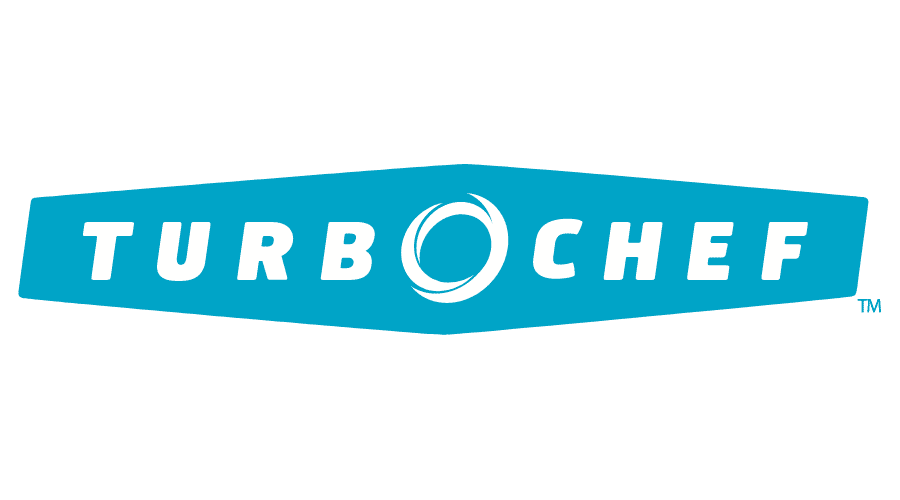
A pioneer in the world of rapid cooking, TurboChef manufactures advanced speed ovens designed to fit varied needs. Based in the US, TurboChef has had a prominent presence in the commercial cooking equipment industry since 1991.
They have a strong presence in Australia and are well-trusted. Speed ovens from TurboChef use high-end technology to deliver high-quality results consistently.
TurboChef i3-9500-5-AU
Need a powerful and multi-purpose rapid cooking solution without compromising on quality? If so, this TurboChef oven may be what you’re looking for.
This i3 model provides superior cooking performance, takes up less space and consumes less energy too. It has an integral circulating catalytic converter, independently controlled dual motors, and a smart-menu system that stores up to 200 recipes.
Its internal catalytic filtration system allows ventless cooking.
Key features:
- Dimensions (HxWxD): 540mm x 622mm x 794mm
- Capacity: 32.3L
- Wattage: 8600/9900 W
- Stackable design: Yes
- Built-in self-diagnostics: Yes
- Power type: Three phase
TurboChef i5 Rapid Cook Oven
This powerful, high-speed oven is perfect for preparing crispy chicken wings, delicious pizza bases, or tasty sandwiches or French fries within minutes.
Featuring a smart-menu system, this ventless oven has a modern and stylish design and is one of the most advanced ovens in the market.
Key features:
- Dimensions (HXWXD): 540mm x 622mm x 794mm
- Capacity: 62 litres
- Wattage: 8600/9900 W
- Built-in self-diagnostics: Yes
- Stackable: Yes
- Power type: Three phase
Anvil
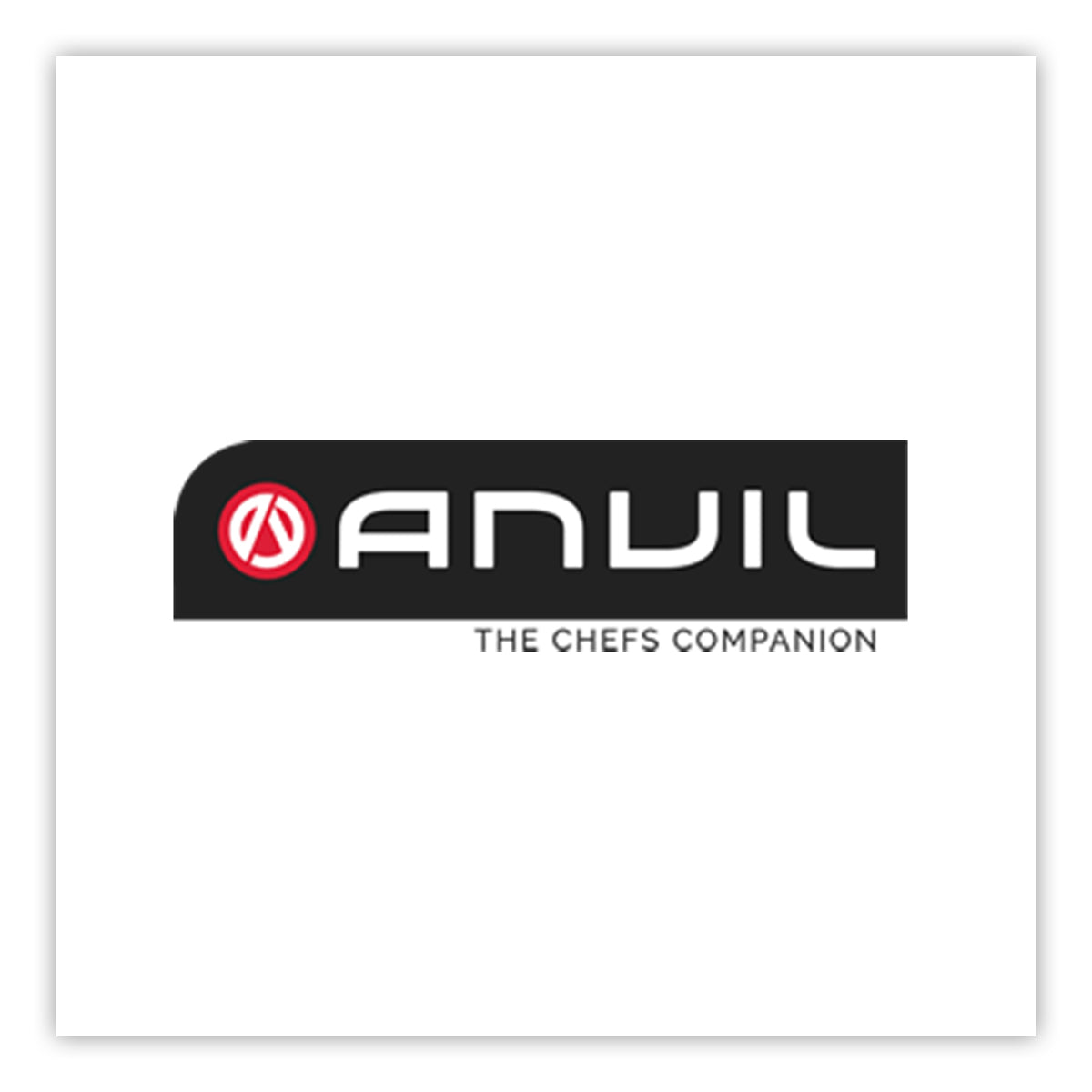
Anvil was founded in South Africa in 1966 and now is a global exporter of commercial kitchen equipment.
It manufactures a broad range of quality products powered by the latest technology for an affordable price.
Anvil’s range of convection ovens is extensive. Their Prima and Grand Forni lines are ideal for small- to medium-sized hospitality venues, while its 6-, 10- and 20-pan convection ovens are designed to serve the high-volume needs of large commercial kitchens.
Prima COA1003
This compact convection oven features a timer, bake function and dual-fan system for even heat distribution. It’s ideal for front-of-house use in small restaurants, cafes and takeaways.
It’s easy to clean, thanks to its removable shelf runners and inner glass panel.
Key features:
- Dimensions (HxWxD): 596mm x 602mm x 652mm
- Chrome grids: 4
- Cooking chamber size: 460 x 370 x 350mm
- Shelf size: 440 x 320mm
- Temperature range: 50°C–300°C
- Wattage: 2.4kW
- Power type: Single phase 10 Amp
Grande Forni COA1005
Anvil’s Grande Forni line of convection ovens is one of the most popular.
This model has a full-width glass door, two timer-controlled reversing fans for excellent heat distribution, and a timer function.
It features the new single-cam-hinge design, making it easier to clean and less prone to wear and tear.
Key features:
- Dimensions (HxWxD): 596mm x 835mm x 800mm
- Capacity: 600 x 400mm baking trays and GN 1/1 pans
- Chrome grids: 4
- Temperature range: 50°C–300°C
- Wattage: 5.6kW
- Power type: Two phase
Used commercial convection oven — worth considering?
Spending thousands of dollars on a new commercial convection oven can put a strain on your budget and cash flow.
If you’d prefer not to invest a lot of money in a convection oven, a cheaper, pre-owned appliance might be the solution you’re looking for.
SilverChef’s range of ‘Certified Used’ commercial equipment is mostly ex-rental equipment sourced from businesses we know and trust.
The equipment is typically less than two-and-a-half years old, has been fully refurbished by us, and is backed by a three-month parts-and-labour warranty.
Considering the effective, or useful, life of commercial convection ovens is about 10 years, you can be sure our Certified Used ovens have plenty of life left in them.
You can either buy or finance the ‘Certified Used’ (and clearance) equipment on our website. We’re one of the few financiers, if not the only one, in Australia that funds second-hand commercial kitchen equipment.
Read more about ‘Certified Used’ equipment
Warranty and insurance
Most equipment manufacturers provide warranties ranging from one to five years, depending on the type of equipment.
If the equipment develops a covered fault within that time, the manufacturer is obliged to repair or replace the equipment or give you a full refund.
Carefully study the warranty to understand exactly what is and isn't covered.
SilverChef offers a three-month parts-and-labour warranty on all our ‘Certified Used’ and clearance equipment.
Business insurance covers loss or damage to your commercial kitchen equipment and other property.
This cover typically includes fire, accident, and theft. Some insurers also offer equipment-breakdown cover.
Contact your insurer to confirm whether the equipment you’re getting is automatically covered by your policy or will need to be added to it.
If your insurer doesn’t provide flood cover as standard, you may wish to consider requesting it.
Questions to ask before ordering a commercial convection oven
Questions to ask your peers:
- Which commercial convection oven are you using?
- Are you satisfied with the appliance? Would you recommend it?
- Did you buy a used commercial convection oven or a brand new one? Why?
- How was your experience with the supplier?
- Did your staff need to be trained to operate the oven?
- How expensive are the spare parts and maintenance?
- Are there any downsides to the equipment?
Questions to ask your equipment dealer:
- Which oven is the best option for my needs and venue?
- Why do you recommend this convection oven?
- What isn’t covered by the warranty?
- Is this model easy to operate? Will my staff need any special training for it?
- What after-sales support to you provide?
- Are spare parts easily available?
- How much does the oven cost to repair?
Commercial convection oven frequently asked questions
What is a commercial convection oven?
Like a conventional oven, a commercial convection oven has heating elements on the top and bottom of the oven cavity. However, unlike a conventional oven, a convection oven has a fan that circulates hot air throughout the oven cavity. Not only does this reduce the cooking time, it also helps food placed on different racks cook at a similar rate, reducing the risk of ‘hot spots’ and producing more even results.
What is the best brand of convection oven to buy?
There are many renowned makes and models of industrial convection ovens marketed in Australia, including world-famous, technologically advanced ovens. Choose a make and model that fits your requirements and budget.
Is a convection oven the same as a fan-forced oven?
Yes, a convection oven is a fan-forced oven. The fan circulates hot air around the oven chamber, promoting faster heat transfer and more even cooking. This is the main feature that makes convection ovens much more efficient than conventional ovens.
Which oven is best for commercial baking?
If you’re opening a bakery or considering your options for commercial baking on a large scale, an indirect-fired, gas convection oven would probably be your best bet. Gas is cheaper than electricity and perfect for mass production. Indirect-fired, high-end models with steam injection and other advanced features can bake delicious cakes, pies, muffins, brownies, pastries and even bread in high volumes.
What is the difference between a convection oven and a combi oven?
A combi oven combines three methods of cooking – convection, steaming, and a combination of convection and steaming —in a single appliance. A convection oven, on the other hand, uses only convection — a process by which heat is transferred by the movement of a heat fluid such as air or water. Read our Best commercial combi oven buyer’s guide here.
How frequently should I clean my commercial convection oven?
We recommend at least wiping down the oven cavity at the end of each day. This will remove baked on residue and reduce the risk of it adulterating the flavour of the food you cook in the oven later on. Give the oven a deeper clean once a week.
Commercial convection oven terminology
Convection baffle
The convection baffle encases the convection fan, which is normally located on the back wall of the oven cavity.
Convection fan
This fan, typically located on the back wall of the oven cavity, helps evenly circulate hot air around the cavity, reducing hot and cold spots for more consistent, multi-rack cooking.
Electrical starter
Some gas convection ovens feature an electrical starter that creates the spark that ignites the gas burners.
Gastronorm
Gastronorm (GN) is European standard for kitchenware tray and container sizes in the professional food industry.
Heating element
The component that generates the heat within the oven’s cavity. Electric convection ovens house one or more conductive elements that generate heat as electricity passes through them.
Pilot light
A pilot light is a small gas burner that stays lit continuously in gas convection ovens so that you can instantly ignite a flame for your oven’s larger burner when gas is passed through it.
Thermostat
Controls the temperature inside the oven. It comes with a temperature-sensitive probe that switches the heat on and off as needed to maintain the right temperature.
Warming drawer
Located at the bottom of the oven, this drawer keeps food warm. It’s available only in some models.
How to maintain your commercial convection oven
Commercial convection ovens are built to withstand huge workloads, but just like any other machine they need regular cleaning and timely maintenance to provide uninterrupted service.
Here’s what you can do to maintain your commercial convection oven:
- Install and use the oven exactly according to the specifications provided in the user manual. Rough use or misuse will naturally reduce the lifespan of the appliance.
- If needed, get your staff trained before they start using the equipment.
- Avoid running the oven at high temperatures for a long period of time.
- Keep an eye on the food and the performance of the oven and get immediate professional help if you notice any deterioration.
- Maintain a regular cleaning routine and get the oven serviced by a professional at reasonable intervals.
Convection oven cleaning tips
- Wipe down the oven cavity thoroughly with a clean, soft and dry cloth at the end of each workday.
- Use a manufacturer-approved de-greaser to quickly wipe off any food residue from the oven interior.
- Deep clean the oven cavity, doors and exterior once a week with liquid soap and warm water (if you’re using the oven daily).
- Use only commercial-grade cleaners and non-abrasive scouring pads as recommended by the manufacturer to avoid chipping, scratches and damage to the oven surface.
How often should a commercial convection oven be serviced?
Industrial convection ovens, compact or large, will typically need servicing at scheduled intervals.
Outside of the scheduled services, you should get in touch with your technician immediately if you notice any of the following:
- discolouration of cooked food
- inconsistency in regular cook time
- loud or unnatural noise coming out of the oven
- the oven is using more fuel than normal.
Save your cash. Use ours!
Hospitality equipment can be expensive and paying for it outright can put pressure on your business’s cash flow.
Our finance solutions allow you to get the equipment you want now and to pay for it in small, regular amounts out of the revenue it helps generates.
Rent–Try–Buy® not only helps you maintain your cash flow, it also gives you unrivalled flexibility to adapt your equipment to the changing needs of your business.
You can upgrade or buy the equipment at any time or, after 12 months, return or continue renting it.
If you decide to buy the equipment, we’ll give you back 75% of the net rent you paid in the first year and 25% of any rental payments thereafter — to put toward the purchase price.
